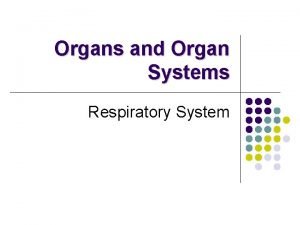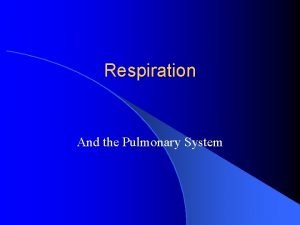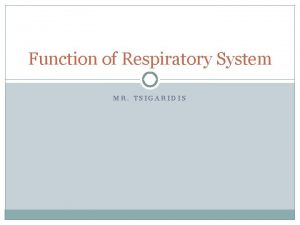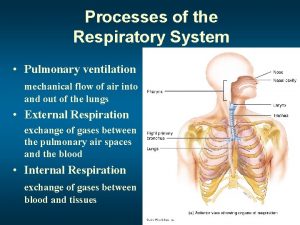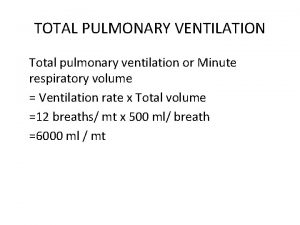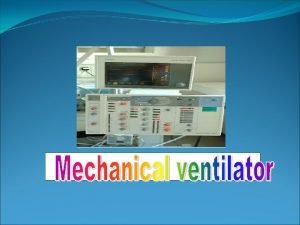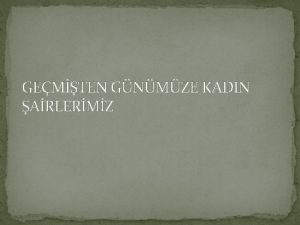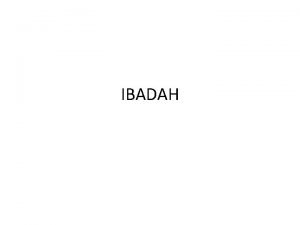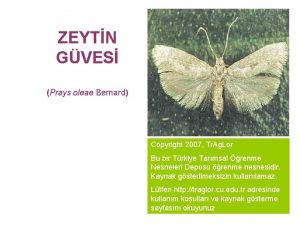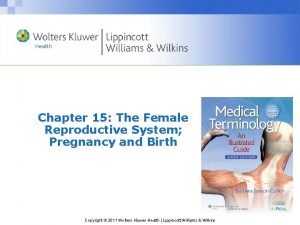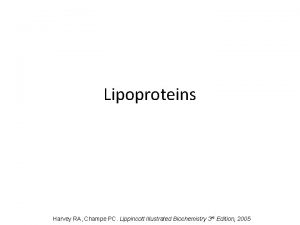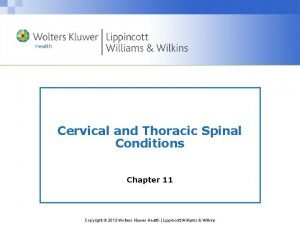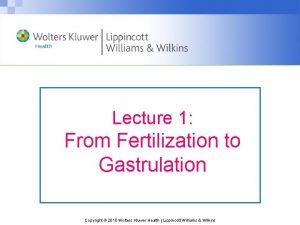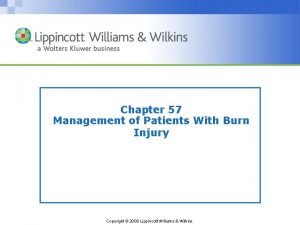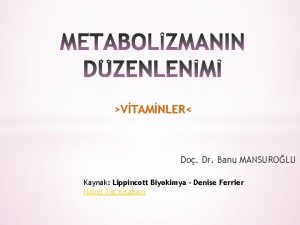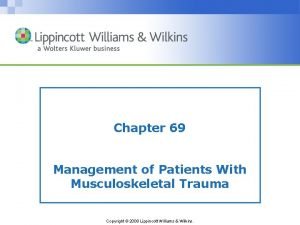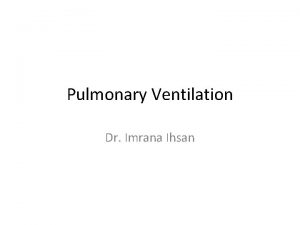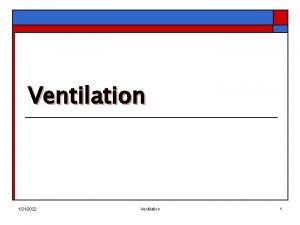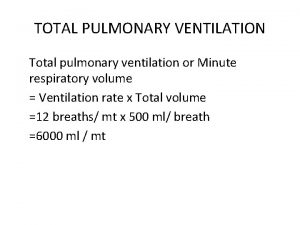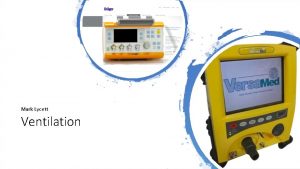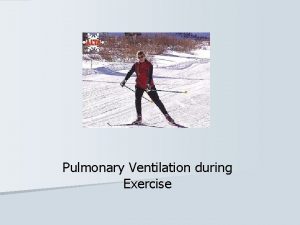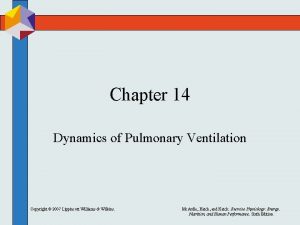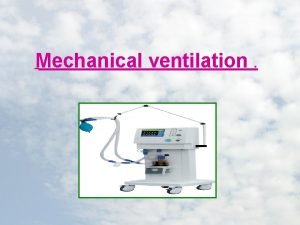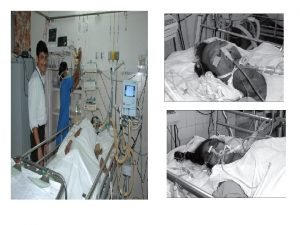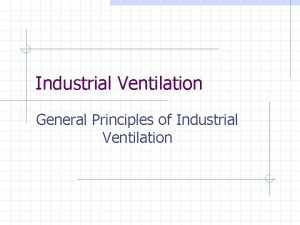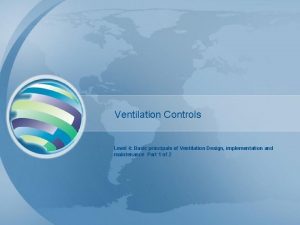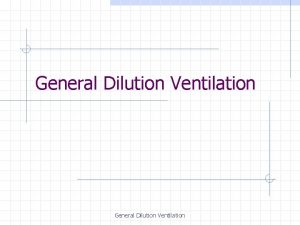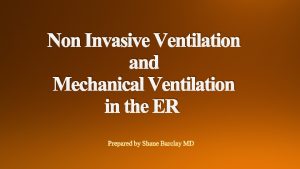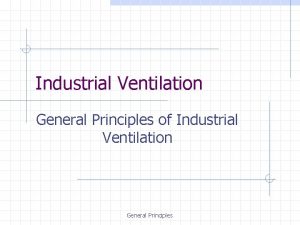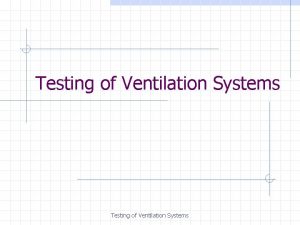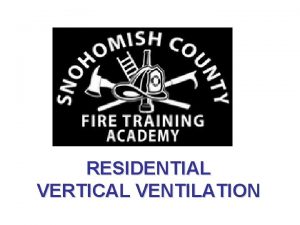Pulmonary Ventilation Dr Imrana Ihsan Copyright 2007 Lippincott

































- Slides: 33

Pulmonary Ventilation Dr. Imrana Ihsan

Copyright © 2007 Lippincott Williams & Wilkins. Mc. Ardle, Katch, and Katch: Exercise Physiology: Energy, Nutrition, and Human Performance, Sixth Edition



Copyright © 2007 Lippincott Williams & Wilkins. Mc. Ardle, Katch, and Katch: Exercise Physiology: Energy, Nutrition, and Human Performance, Sixth Edition


Respiratory Zone Copyright © 2008 Pearson Education, Inc. , publishing as Benjamin Cummings. Figure 16. 3 (3 of 3)

Anatomy of the Respiratory Zone Copyright © 2008 Pearson Education, Inc. , publishing as Benjamin Cummings. Figure 16. 5 a

Copyright © 2007 Lippincott Williams & Wilkins. Mc. Ardle, Katch, and Katch: Exercise Physiology: Energy, Nutrition, and Human Performance, Sixth Edition


PULMONARY VENTILATION: MECHANISM – Pressure gradients are established by changes in the size of the thoracic cavity that are produced by contraction and relaxation of muscles (Figures 24 -4 and 24 -5) – Boyle’s law: the volume of gas varies inversely with pressure at a constant temperature – Inspiration: contraction of the diaphragm and external intercostals produces inspiration; as they contract, the thoracic cavity becomes larger (Figures 24 -6 and 24 -7) • Expansion of the thorax results in decreased intrapleural pressure, leading to decreased alveolar pressure • Air moves into the lungs when alveolar pressure drops below atmospheric pressure • Compliance: ability of pulmonary tissues to stretch, thus making inspiration possible 11



Chest Wall and Pleural Sac Copyright © 2008 Pearson Education, Inc. , publishing as Benjamin Cummings. Figure 16. 7

Pulmonary Pressures Copyright © 2008 Pearson Education, Inc. , publishing as Benjamin Cummings. Figure 16. 8 a–b




19

20

21

22

23

Volume and Pressure Changes Copyright © 2008 Pearson Education, Inc. , publishing as Benjamin Cummings. Figure 16. 13

Spirometry Copyright © 2008 Pearson Education, Inc. , publishing as Benjamin Cummings. Figure 16. 15

26

Minute Ventilation Total volume of air entering and leaving respiratory system each minute – Minute ventilation = VT x RR – Normal respiration rate = 12 breaths/min – Normal VT = 500 m. L – Normal minute ventilation = • 500 m. L x 12 breaths/min = 6000 m. L/min Copyright © 2008 Pearson Education, Inc. , publishing as Benjamin Cummings.

Dead Space and Ventilation Conducting zone (anatomical dead space) Fresh air “Old air” Alveolus Expiration (c) Copyright © 2008 Pearson Education, Inc. , publishing as Benjamin Cummings. Inspiration (a) CO 2 Exchange with blood (b) Figure 16. 17

Alveolar Ventilation – Volume of air reaching the gas exchange areas per minute – Alveolar ventilation = (VT x RR) – (DSV x RR) – Normal = 4200 m. L/min (500 m. L/br x 12 br/min) – (150 m. L/br X 12 br/min) Copyright © 2008 Pearson Education, Inc. , publishing as Benjamin Cummings.

Respiratory Rate and Ventilation Copyright © 2008 Pearson Education, Inc. , publishing as Benjamin Cummings. Table 16. 1

Definitions of Dead Space Anatomic Dead Space Physiologic Dead Space Low Blood Flow Copyright © 2006 by Elsevier, Inc.


Thankyou
 Structure of the upper respiratory system
Structure of the upper respiratory system What is windpipe called
What is windpipe called Pulmonary ventilation
Pulmonary ventilation Pulmonary ventilation consists of two cyclic phases
Pulmonary ventilation consists of two cyclic phases Pulmonary ventilation
Pulmonary ventilation Respiratory membrane
Respiratory membrane Mechanical ventilation modes
Mechanical ventilation modes Ihsan kaan berberoğlu
Ihsan kaan berberoğlu Ihsan terhadap binatang
Ihsan terhadap binatang Ihsan institute
Ihsan institute Makbule leman şiirleri
Makbule leman şiirleri Logo nur ihsan
Logo nur ihsan Muhammad ihsan adfinda
Muhammad ihsan adfinda Pengertian ihsan
Pengertian ihsan Pearson
Pearson Copyright 2007
Copyright 2007 Lippincott
Lippincott Lippincott williams & wilkins
Lippincott williams & wilkins Katie lippincott
Katie lippincott Lippincott
Lippincott Lipoproteins in biochemistry
Lipoproteins in biochemistry Management of patients with neurologic trauma
Management of patients with neurologic trauma Lippincott williams & wilkins
Lippincott williams & wilkins Wyman gordon
Wyman gordon Lippincott williams & wilkins
Lippincott williams & wilkins Lippincott williams & wilkins
Lippincott williams & wilkins Lippincottdirect
Lippincottdirect What is lippincott
What is lippincott Lippincott
Lippincott Lippincott biyokimya
Lippincott biyokimya Wolters kluwer health lippincott williams & wilkins
Wolters kluwer health lippincott williams & wilkins Lippincott williams & wilkins
Lippincott williams & wilkins Franzmarie lippincott
Franzmarie lippincott Lippincott williams
Lippincott williams

